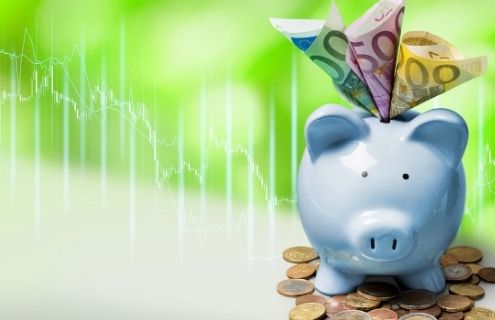Environmental, social and governance (ESG) exchange-traded funds (ETF) chalked up an “incredible” 223 per cent growth over 2020, achieving a new record of $189 billion in assets under management (AUM), according to TrackInsight.
ESG ETFs captured $97 billion of inflows last year and nearly 200 new funds were brought to market during the same period, with ESG set to become “a key battleground” for issuers over 2021, the global ETF analysis platform states.
Sustainability-focused funds also dominated in terms of overall performance with five of the top 10 best performing ETFs globally (excluding exchange-traded commodities and leveraged funds) following an ESG approach. All delivered triple-digit returns to investors over 2020.
Top earners included Invesco solar ETF and Invesco wilderhill clean energy ETF which banked 221 per cent and 200.1 per cent net returns respectively.
Commenting on the latest data Anaelle Ubaldino, head of ETF research and investment advisory at TrackInsight, says that 2020 was a “long-awaited turning point” for ESG ETFs.
“As competition for potentially trillions of dollars of new ESG assets heats up, we expect to see more issuers enter the ESG ETF market over 2021,” she adds.
In the wider ETF universe, a combination of strong equity market performance coupled with accelerating investor inflows contributed to the global ETF market finishing 2020 at a record high of $7.6 trillion across 6,518 ETFs, according to TrackInsight.
For securities finance market participants, the growth figures will come as a mixed blessing as the unsettled relationship between lending programmes and ESG standards continues to crystalise.
In December 2020, DWS, a German asset manager majority-owned by Deutsche Bank, closed the lending programme of one of its long-standing ETFs as part of its switch from tracking a traditional FTSE index to an ESG-friendly one.
Speaking to SFT at the time, DWS passive product specialist structurer Zeb Saeed said the need for restrictive collateral parameters and regular recalls creates “a number of other challenges and alters the economics of the securities lending function to the extent that it effectively erodes much of the potential revenue from lending”.
Saeed acknowledged that lending agents are capable of constructing bespoke ESG-friendly programmes with collateral rules and automatic recall facilities but concedes that this would simultaneously make the assets unpopular with borrowers.
Commenting on DWS' ETF activities in a recent blog post, Roy Zimmerhansl,
practice lead at Pierpoint Financial, downplayed the significance of a fund with roughly $40 million in AUM leaving the lending pool but acknowledged it might be an early warning of an emerging trend as ESG ETFs gather momentum.
DWS already has a dozen ETFs tracking ESG indexes — none with lending programmes — and has underscored its commitment to building out its stable of funds in this arena going forward.
As banks and asset managers focus on bolstering their ESG portfolios in order to seek above-average returns and also cement their sustainability credentials, these funds may prove to be pebbles at the top of the mountain that eventually cause a landslide.
Moreover, in a market environment where rock-bottom interest rates and freely available capital has inspired a wave of speculative investing in growth sections, hedge funds pursuing directional short strategies may soon be willing to pay over the odds to borrow potentially over-valued ESG assets.
Should securities lending market participants be concerned? Maybe. One of the main reasons ESG ETFs don’t currently lend assets is not because the two strategies are irreconcilable, but because it’s not worth their time and resources, as DWS shows.
The relatively uncrowded field of ESG funds means their managers do not have to engage in what PGGM’s Roelof Van der Struik famously refers to as “picking up the crumbs” in order to gain additional incremental returns.
However, the reliable market forces of supply and demand may yet kick in as the ESG space matures and asset owners may find themselves knocking on the door of their agent lenders looking to rekindle relationships in the months and years ahead.



